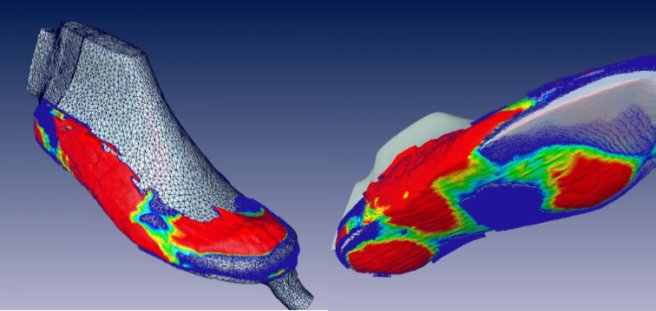|
|
|
||||||||||||||||
|
|
|
||||||||||||||||
|
|
|||||||||||||||||
 |
|||||||||||||||||
|
|
|
|
|
|
|
|
|||||||||||
|
|
|||||||||||||||||
|
|
Research projects of the Software Technology and Computer Graphics Lab
|
||||||||||||||||
| Reconstruction and 3D visualization of fiber tracts from diffusion magnetic resonance Imaging (MRI) data Our focus is on clinically practical methods which are capable of resolving multiple fiber directions within a voxel. We apply our methods primarily to high angular resolution diffusion imaging (HARDI) data, measured under clinical conditions with acuisition protocols that do not exceed 10 minutes of measurement time. One topic of our work is noise-suppression and regularization of q-ball datasets. Another topic is the enhancement of deterministic fiber tracking algorithms by incorporating information from a local voxel neighborhood. We cooperate with partners from the University Hospital Tübingen, Dptm. for Diagnostic and Interventional Neuroradiology. EHRICKE, H-H., U. KLOSE und W. GRODD: Visualizing MR Diffusion Tensor Fields by Dynamic Fiber Tracking and Uncertainty Mapping. Computers and Graphics, 30:255-264, 2006. K. OTTO, U. KLOSE, V.KUMAR, H.-H. EHRICKE, Regularization of diffusion MRI q-ball fields for crossing fiber tractography. In O. Dössel and C. Schlegel, editors, IFMBE Proceedings, volume 25/II, pages 845-848, 2009. H.-H. Ehricke, K.-M- Otto and U. KLOSE, Regularization of bending and crossing white matter fibers in MRI Q-ball fields. Magn. Res. Im., 29(7):916-26, 2011. |
|||||||||||||||||
 Visualization of brainstem together with cerebellar tracts reconstructed with dynamic fiber tracking. |
|||||||||||||||||
 Tracking result from phantom study with ODFs from different regularization methods: (a) FRT and Gaussian kernel, (b) spherical harmonics approximation + Laplace-Beltrami operator, and (c) our CB-REG approach. |
|||||||||||||||||
 Tracking results of a high-curvature pathway from the phantom study: (a) without CB-REG, (b) with asymmetric CB-REG and symmetric tracking algorithm, (c) with asymmetric CB-REG and asymmetric tracking. |
|||||||||||||||||
| Optical quality control in shoe manufacturing by automatic CT image analysis In the framework of an AiF funded project a pattern recognition algorithm for quality control of industrially manufactured shoes is developed. Three-dimensional Computed Tomography (CT) data are analyzed such that quantitative measures of shoe size, length and width may be determined. The main problem is to automatically identify measurement landmarks within the shoe cavity. KÜPER, K., BECKER, N., OBENS, T., MÜLLER-HORVAT, C., EHRICKE, H.-H., CLAUSSEN, C: Bestimmung von Schuhinnenmaßen: Zerstörungsfreie Werkstoffprüfung mittels Computertomographie, Röfo, 177: 459-460, 2005. |
|||||||||||||||||
 3D visualization of shoe cavity and last (colorized) allows qualitative estimation of congruency. |
|||||||||||||||||
|
|
|||||||||||||||||
|
|
|
|
|
|
|
||||||||||||
|
|
|
|
|||||||||||||||
|
|
|
|
|
|
|
|
|
|
|
|
|
|
|
|
|
|
|